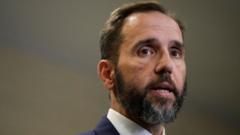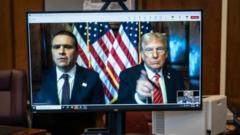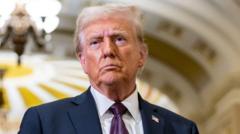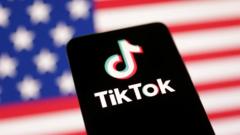As the debate continues, some Americans are pushing for its permanence, arguing for various benefits to health and safety.
Trump Proposes Ending Daylight Saving Time, Calling It 'Costly' and 'Inconvenient'

Trump Proposes Ending Daylight Saving Time, Calling It 'Costly' and 'Inconvenient'
Former President Trump has voiced intentions to abolish Daylight Saving Time (DST), citing financial burdens and disruption to daily life.
Former President Donald Trump has announced his plans to end the practice of Daylight Saving Time (DST), labeling it as "inconvenient" and "very costly" for American citizens. This assertion comes from Trump’s Truth Social platform, where he pointed out that while there is a "small but strong constituency" supporting DST, he believes it should be discontinued.
Daylight Saving Time involves moving clocks forward by one hour in the spring and back again in the autumn, aimed at harnessing more daylight during active hours. Pew Research Center indicates that around one-third of countries worldwide engage in DST, notably most European nations. However, within the United States, there exists a long-standing divide regarding the continuation of this tradition. Advocates for maintaining standard time often voice health benefits, suggesting that morning daylight promotes better sleep cycles, while they criticize the disorienting effects of time changes on sleep patterns.
Conversely, proponents of permanent DST maintain that the extended daylight in the evening minimizes crime, conserves energy, and contributes to traffic safety by reducing accidents. Supporters assert that their solution would be economically advantageous, claiming it enhances productivity and overall well-being.
Trump's initiative is not the first attempt at modifying or abolishing the biannual clock changes. The Sunshine Protection Act, aimed at making DST permanent, garnered enough support to pass the Democratic-led Senate in 2022, but ultimately did not reach the desk of President Joe Biden. Interestingly, the act's creator, Republican Senator Marco Rubio, has been nominated by Trump for the position of Secretary of State in his upcoming administration. Rubio previously highlighted studies indicating economic benefits linked to a permanent DST.
Historically, the US implemented seasonal clock changes during World War I in 1918 to conserve resources. The practice faced backlash from the agricultural community, leading to its repeal post-war. However, DST was reinstated during World War II and has been established since 1966, although states such as Hawaii and most of Arizona opted out of the changes.
Research conducted by Joan Costa-i-Font at the London School of Economics indicates that DST could negatively impact sleep and physical health, increasing stress and fatigue levels among individuals. Economically, her study predicts that eliminating DST could enhance economic output by approximately €754 ($792; £627) per person annually. Countries such as Mexico and Jordan have recently abandoned the practice, though areas near the US still observe DST for economic continuity.
Public opinion shows significant support for changing DST policies, as indicated by a Monmouth University Poll which found that about two-thirds of Americans favor making DST permanent, reflecting the ongoing discourse surrounding time management and its broad implications on society.
As Trump prepares to potentially shape a future without DST, the conversation around time changes in America is far from over.
Daylight Saving Time involves moving clocks forward by one hour in the spring and back again in the autumn, aimed at harnessing more daylight during active hours. Pew Research Center indicates that around one-third of countries worldwide engage in DST, notably most European nations. However, within the United States, there exists a long-standing divide regarding the continuation of this tradition. Advocates for maintaining standard time often voice health benefits, suggesting that morning daylight promotes better sleep cycles, while they criticize the disorienting effects of time changes on sleep patterns.
Conversely, proponents of permanent DST maintain that the extended daylight in the evening minimizes crime, conserves energy, and contributes to traffic safety by reducing accidents. Supporters assert that their solution would be economically advantageous, claiming it enhances productivity and overall well-being.
Trump's initiative is not the first attempt at modifying or abolishing the biannual clock changes. The Sunshine Protection Act, aimed at making DST permanent, garnered enough support to pass the Democratic-led Senate in 2022, but ultimately did not reach the desk of President Joe Biden. Interestingly, the act's creator, Republican Senator Marco Rubio, has been nominated by Trump for the position of Secretary of State in his upcoming administration. Rubio previously highlighted studies indicating economic benefits linked to a permanent DST.
Historically, the US implemented seasonal clock changes during World War I in 1918 to conserve resources. The practice faced backlash from the agricultural community, leading to its repeal post-war. However, DST was reinstated during World War II and has been established since 1966, although states such as Hawaii and most of Arizona opted out of the changes.
Research conducted by Joan Costa-i-Font at the London School of Economics indicates that DST could negatively impact sleep and physical health, increasing stress and fatigue levels among individuals. Economically, her study predicts that eliminating DST could enhance economic output by approximately €754 ($792; £627) per person annually. Countries such as Mexico and Jordan have recently abandoned the practice, though areas near the US still observe DST for economic continuity.
Public opinion shows significant support for changing DST policies, as indicated by a Monmouth University Poll which found that about two-thirds of Americans favor making DST permanent, reflecting the ongoing discourse surrounding time management and its broad implications on society.
As Trump prepares to potentially shape a future without DST, the conversation around time changes in America is far from over.


















